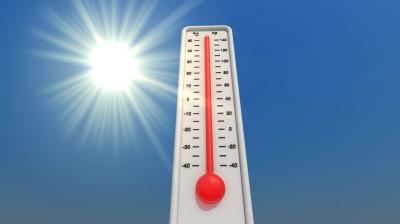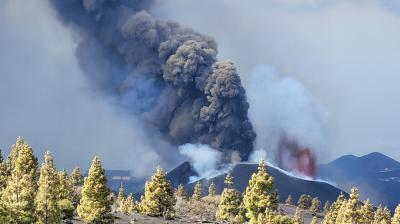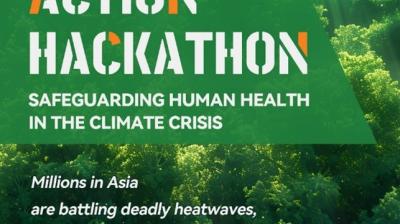More extreme heat demands coordinated action
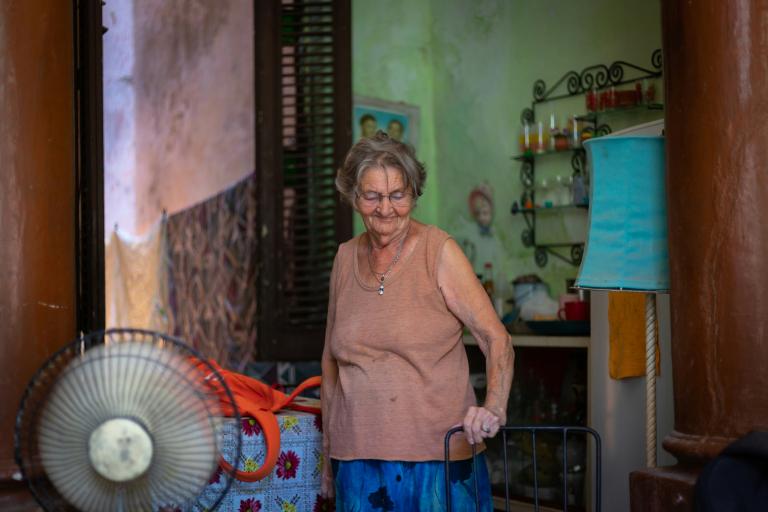
The Global Heat-Health Information Network, which is co-sponsored by WMO, stepped up its #HeatReady campaign. It issued a call to action to governments and communities to mobilize targeted prevention measures and early warnings, and provided simple tips for individuals.
“The time for complacency is over. The 2024 heat season is set to challenge our resilience like never before, but by taking urgent and coordinated action we can save lives. Let us act decisively, with the urgency and commitment that this crisis demands, to protect those most at risk from the avoidable health impacts of heat,” says Joy Shumake-Guillemot, the Lead of the World Meteorological Organization-World Health Organization Joint Office for Climate and Health.
“Almost all deaths directly due to excess heat can be prevented. Governments, authorities and relevant public and private organizations and individuals need to take this seriously and act now,” she says.
Heatwaves so far in 2024 in Asia, Africa, Europe, the Middle East and North America have already exacted a heavy toll, claiming hundreds of lives, reducing labour productivity and crop yields, disrupting education and energy supplies and fanning the risk of wildfires.
“Heatwaves are becoming more common and intense, are starting earlier and ending later, and occurring simultaneously over several regions due to human-induced climate change. Unbearable temperatures over 40°C and even 50°C are increasingly frequent in many parts of the world, paralyzing society and posing a major threat to human health and well-being,” says WMO climate expert Alvaro Silva.
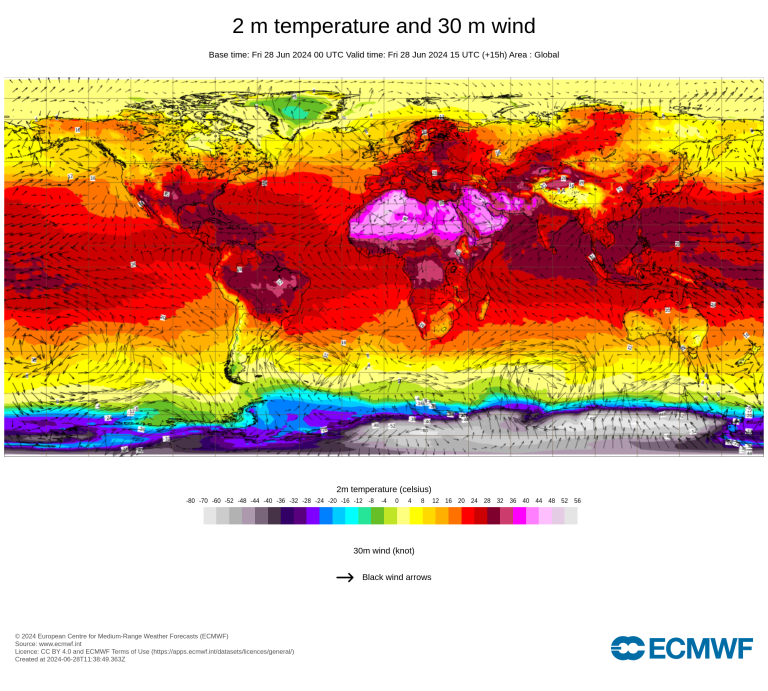
North America
Extreme and persistent heat has been overwhelming southwestern parts of the US, Mexico, and the northern countries of Central America since late May. The temperature reached 52 °C at Tepache weather station in Northwestern Mexico on 20 June.
The US National Weather Service issued repeated advisories about “dangerous and oppressive heat” in multiple regions. The National Integrated Heat Health Information System (NIHHIS), heat.gov, monitors risk. On 28 June, more than 50 million Americans are under a heat alert. Unusually hot temperatures combine with high levels of humidity to reach thresholds of major and extreme risk.
Asia
Exceptionally high temperatures are being experienced in the Middle East, an already traditionally hot region. Jahra in Kuwait had eight consecutive days with maximum day-time temperatures above 50 ºC and minimum (nighttime) sometimes above 35 °C. This corresponds to mean temperatures 6-8 °C above normal.
In Saudi Arabia, temperatures soared beyond 50 °C (122 °Fahrenheit). Millions of people were exposed to dangerous conditions during the annual Hajj, or pilgrimage to Mecca, with a reported 1 300 deaths and large numbers of heat illnesses. Such extreme conditions during mass gatherings pose significant challenges for public authorities and preparedness measures.
Even in May, many parts of the Middle East – and large parts of Asia - experienced temperatures well above 40°C. The heat was particularly difficult for people living in refugee camps and informal housing, as well as for outdoor workers. Schools were closed down in many cities in Asia.
Much of India suffered extended and persistent heat in the pre-monsoon period from March to early June. New Delhi recorded its highest ever temperatures in May paralysing the city. Persistent high day and nighttime temperatures continue to take a toll on millions of residents, and stressing water and power resources.
Europe and North Africa
Countries around the Mediterranean and in North Africa suffered scorching high temperatures, which contributed to forest fires in Türkiye and Greece.
Sea surface temperatures are exceptionally warm and reinforce the warmer than average conditions in many areas. In mid and high latitudes, a meandering polar jet stream leads to persisting warm and dry conditions in some areas (air coming from subtropical areas) but also cold and rainy conditions in other parts.
For July-September period, which is the warmest season for large parts of the Northern Hemisphere, a new seasonal forecast produced for WMO suggests widespread above average temperatures. This includes almost all of Africa, Europe and Asia, most of North America, Central America and the Caribbean, and tropical South America. This means widespread enhanced risk of heatwaves and wildfires.
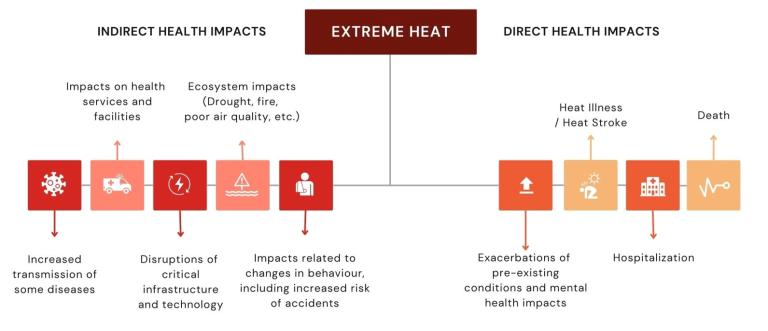
Heat-health action
Cities, states, and countries should put in place heat preparedness and response strategies, which are stress tested to consider unprecedented extreme heat conditions. This includes developing and implementing comprehensive intersectoral Heat Action Plans and Early Warning Systems, enhancing public awareness campaigns, and investing in heat-resilient infrastructure and policies, according to the Global Heat-Health Information Network.
Local authorities should target resources and interventions towards protecting the most vulnerable people in their communities. Administrative actions include ensuring access to power and water, modifying working hours, dress codes, school closures, and civil protection readiness.
Individual awareness and preparedness are equally critical. Everyone should know the signs and symptoms of heat illness, and have a personal plan in place to stay safe and protect those in their care, especially the most vulnerable. Residents should follow official warnings and recommendations from their NMHS and health authorities.
For those without adequate cooling, indoors can be hotter than outdoors – and excess indoor heat is deadly. High nighttime temperatures can also be extremely dangerous – even if it’s less hot than during the day – for those who don’t have adequate cooling at home. Humidity and other factors can compound risk even after the sun goes down.
Simple actions, such as staying hydrated, applying water to the skin, avoiding strenuous activities during peak heat, and checking on elderly neighbours and family members, can save lives.
Further information is at https://www.who.int/news-room/fact-sheets/detail/climate-change-heat-and-health


